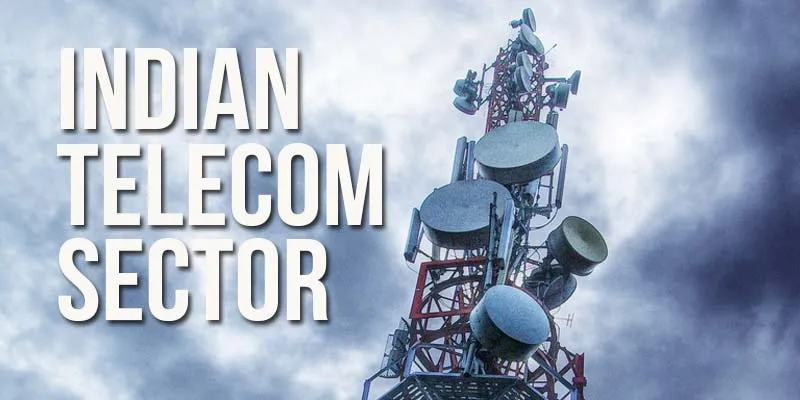Why current mobile networks do not benefit startups and consumers
There are several Over-The-Top (OTT) companies emerging in India; the strange thing is they are building their apps to support 2G speeds for video downloads. Data provided by IAMAI suggests that 70 percent of India is still running on 2G networks. One would ask if Indians love 2G plans because they have not yet been exposed to the benefits of 4G. Truth be told, there are not many services built for a 4G experience because the network itself is slow. A startup called FastFilmz offers HD-quality unlimited video download for Rs 30 in 4G speeds. But with low-speed 2G networks, their customer must enjoy low-quality video, which can dramatically reduce the experience, because the consumer will have to spend more on data for bad-quality video.
Today, 95 percent of Indians are on prepaid services and only 150 million are using 3G in some form, mostly to transfer downloaded images, music, and video. “Most consumers in the country prefer a 2G data plan because they can continue to message on WhatsApp, or they can download a few songs if they subscribe to a data plan worth Rs 100 that lasts seven days,” says Karam Malhotra, Co-founder of FastFilmz. What consumers do not understand is that 2G networks are slower and expensive to maintain because the technology requires a lot of servers and switches to be added to manage the traffic. The question is why have 4G networks been launched to such low adoption. From this, we can deduce why B2C businesses are not getting funded because the market adoption for data consumption is very low in this country.

The real problem of networks and consumers
This lack of adoption exists because of two problems. The first one is clearly because 3G networks too have not been installed to full capacity in small cities. These towers are set up to handle a limited volume of data consumption. This leads directly to the next problem. The majority of Indians cannot loosen their purse strings to spend that Rs 20 extra for a 3G or 4G service. With this as the back drop, the real story of the economic situation in the country is unveiled. That Rs 20 – spent every week – for data consumed on networks, which people do not trust, can be an additional burden on their finances if the data speeds do not create the desired experience.
These are the reasons several internet startups have not scaled beyond 10 cities (barring the top three e-commerce companies that are losing cash, and have served at least 20 percent of the 15,000 pin codes in India). The big question to ask is when would consumers – in the long tail – really turn to the internet? Some say five years.
How do you make them consume data?
India has the lowest average revenue per user in the world. According to the Cellular Operators Association of India (COAI), telcos only make $4 from a customer on a yearly basis. Now if the customers are to be made to consume 4G data, then data costs have to drop dramatically, and operators must invest more in increasing network traffic rather than just having 4G-enabled towers with little bandwidth. Telecom companies have paid over Rs 100,000 crores, close to $15 billion, to acquire 3G and 4G spectrum and have to stay invested for the long term because app-based services are only going to make revenues in five or seven years. Telcos are waiting for smart phone services to enter the market, but without high speeds, app-based consumption is not going to happen beyond songs and cinema. The consumer is between a rock and a hard place. On one side, the telcos will not add more towers and proliferate 4G networks, and on the other, startups are strung out because they cannot build services without great speeds.

Here is why consumers should be made to go 4G
Let us take an example of a consumer who subscribes to a 400 MB 2G data plan worth Rs 107 – available for 14 days – and he or she can download only one movie based on that plan. But if there was a 4G plan – if it worked efficiently – they could down three movies at that cost. The point is, will consumers risk downloading three movies on a phone plan where the network is cranky? Instead, consumers may support piracy where they can buy five movies for Rs 75 on a SD card, or buy a DVD for Rs 50, which offers as many movies. These numbers tell you why smartphone-based data – for video consumption – can be less than 10 million, and consumption of other apps including e-commerce apps, will not be more than 50 million.
“Finally, there is sanity in the market in terms of funding. Investors have realised that growth is not in more than a few major cities for data-based services. You have to stay invested in India to win,” says Kavin Bharti Mittal, Founder of Hike, a smart messenger service.
India is a market where everyone has to stay invested for at least five years to see if data consumption can grow to the next level. This can only happen if operators offered stronger 4G networks at a lower cost, which will give rise to hundreds of startups serving the long tail of consumption.
“It is strange to see a country that boasts of being a startup nation where new age networks have not proliferated rapidly. If only networks are available for the citizen, the power of smartphones can be unleashed and startups can offer better experiences on mobiles,” says Abinash Tripathy, CEO and Founder of Helpshift.
The question to ask is why we debate net neutrality when the networks do not even provide the desired experience in this country.







